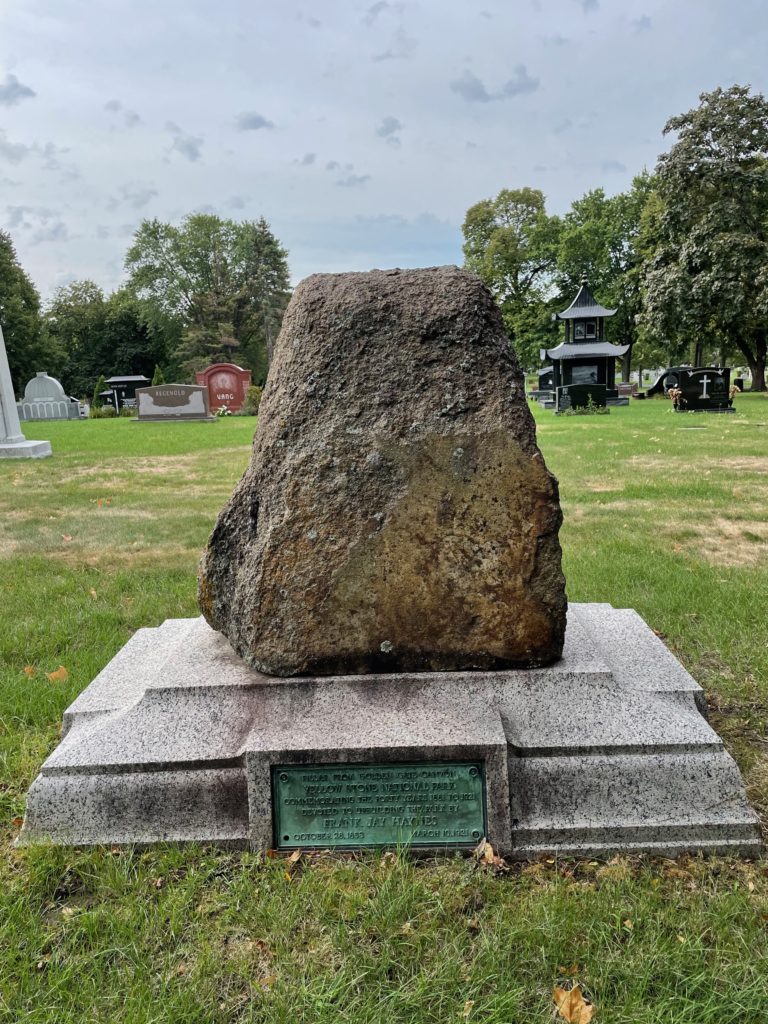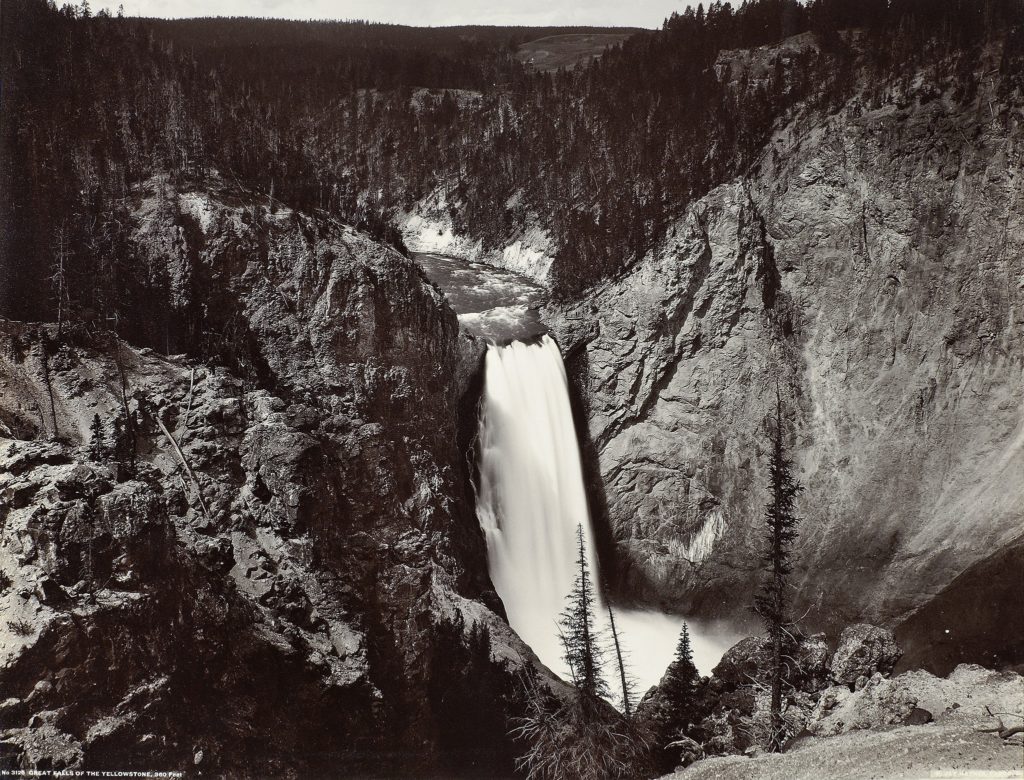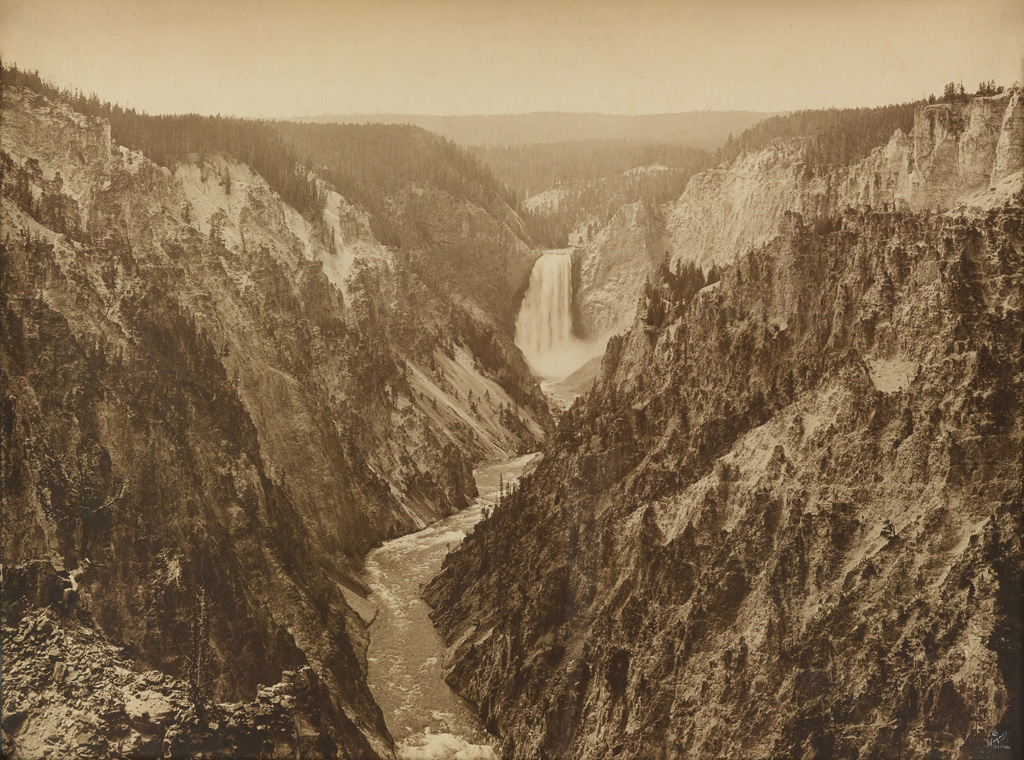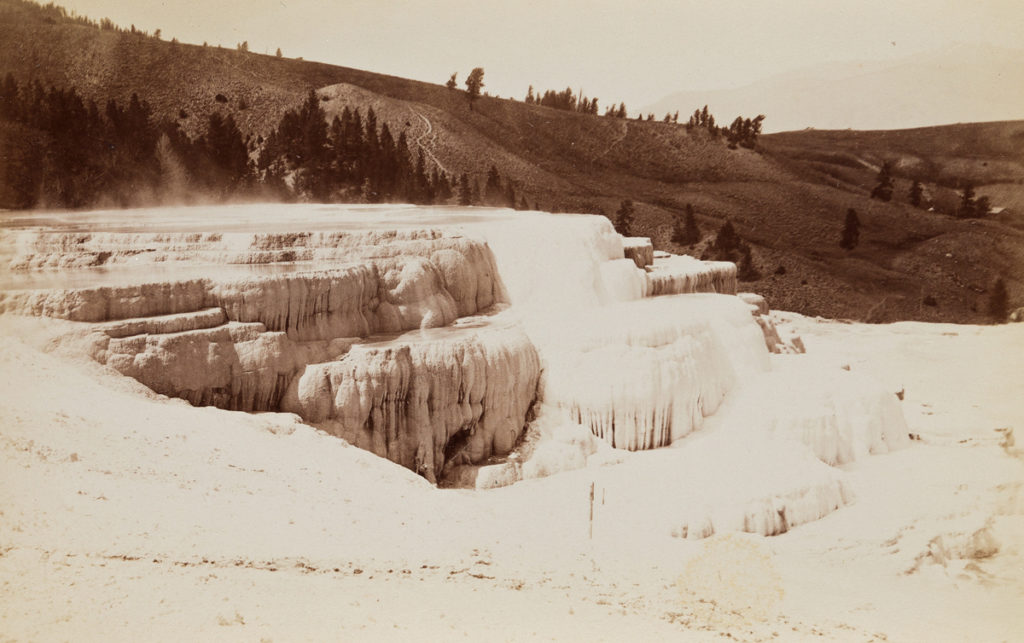Erik Visits an American Grave, Part 1,151
This is the grave of F. Jay Haynes.

Born in 1853 in Saline, Michigan, Frank Jay Haynes grew up in a middle class household. His father was a local merchant. From the time he was young, he went by F. Jay. He became interested in photography as a kid and he started playing around with the still new technology. For awhile, he became a traveling salesman. After awhile, he was located in Ripon, Wisconsin, mostly famous for being where the Republican Party formed back in 1854. There, he became an apprentice for William Lockwood, a well known photographer. Now he really learned how to be a photographer and how to do so professionally. He also married a coworker named Lily Snyder while he was there.
In 1876, Haynes and his new wife moved to Moorhead, Minnesota to start a photography studio of his own. He became known for his railroad photographs and his portrait photography, which gave him a solid business. This was an era where people really wanted to be photographed and if you were good at it, you could make good money. Eventually, he bought his own Pullman car and outfitted it as a mobile photography studio for the Northern Pacific Railroad. The Northern Pacific was highly interested in using its lines to promote tourist business. See, the thing about all the transcontinentals, as Richard White so convincingly demonstrated in his fantastic Railroaded, is that there was no good financial reason to build them. There might be a geopolitical reason to build a railroad connecting Minneapolis to the Puget Sound across North Dakota, Montana, and Idaho, but there most certainly was no good financial reason to do it. So the Northern Pacific had to gin up business. It was behind the creation of Yellowstone National Park in 1872 because it hoped to be the exclusive service to get people there.
In 1881, Haynes visited Yellowstone for the first time. By this time, the Northern Pacific hadn’t quite gotten there yet, but he could get as close as Glendive, Montana (definitely the first time that not so great town has come up in this series!) and take a carriage from there. He did so and was blown away. But Haynes was not a man to trifle around possibilities to make money. Just from the drawings he had seen of Yellowstone and talks with people who had been there, he knew what he was going to be getting into. So before even visiting, he asked the Secretary of the Interior to be made the official photographer of the park. Of course, the government couldn’t do that. But this gives you a sense of the man Haynes was. He liked money and he knew he could make it with his camera. In any case, he didn’t really need such a position. He returned to the park every year from the next forty years, all the way up until the year he died. This was his bread-and-butter after all.
Moreover, Haynes could find all kinds of ways to make money off of Yellowstone. For example, in 1883, Chester Arthur, not exactly a man in great physical shape or health, was getting pretty sick. So his doctors recommended a trip to rest and relax. Yellowstone was out there. And for the Republican Party, this could be good publicity. So Haynes did get the job as official photographer of the Arthur trip.
Haynes pulled off another coup in the winter of 1886-87. Big publishers in New York wanted to sponsor a winter trip to Yellowstone. So Century and the New York World gave a bunch of money to Haynes and others to lead a party out there and take pictures of Yellowstone in its winter glory. This wasn’t some easy trip. It was hard work to pull yourself on skis through this much snow! They were there for 29 days. One night, it was -52! They nearly died when they got stuck on a mountain during a snowstorm. But by god they got the photographs. Over the years, he built a big studio at Mammoth Hot Springs.
Haynes also had a great way to make extra money. He had his railroad car, right. So he’d stop in any given town and offer up he and his men to take pictures of people for money. Getting your photo taken was a big deal. Any town that was anything was on a rail line. So Haynes would stop and just rake in the bucks. He ran this operation for about 20 years.
Haynes also published books of his Yellowstone photographs. Haynes Guide-Yellowstone National Park came out in 1890 and was popular. In 1891, Albert Guptill published A Ramble in Wonderland-A Description of the Marvelous Region Traversed by the Northern Pacific Railroad and Haynes provided the photographs. In 1909, he published Haynes Souvenir Album-Yellowstone National Park, a similar deal for tourists to buy to remember their trip with fancy pictures.
Haynes died in 1921, at the age of 67. By this time, he was probably more associated with Yellowstone than any other single person. Horace Albright, then the superintendent of Yellowstone, named a mountain in his honor. His photo studio continued as well under control under his son Jack, who had taken over most of the family business in 1916.
F. Jay Haynes is buried in Roselawn Cemetery, Roseville, Minnesota. The grave itself is interesting in that it came from an actual pillar in Golden Gate Canyon in the park.
Let’s look at some of Haynes’ work:




If you would like this series to visit other nature photographers, you can donate to cover the required expenses here. William Henry Jackson (who also made his name with Yellowstone pics) is in Arlington and Carleton Watkins may be buried in Oneonta, New York, though there is some debate over whether he is really there. Previous posts in this series are archived here.


